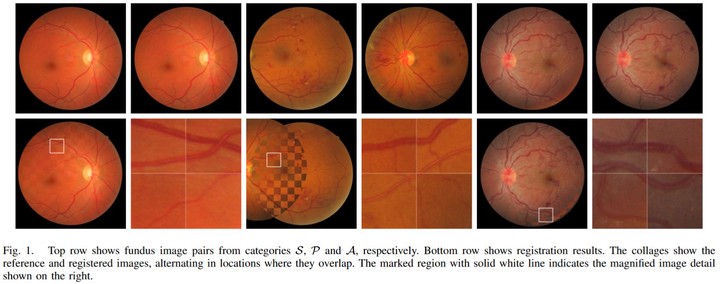An experimental evaluation of the accuracy of keypoints-based retinal image registration

Abstract
For the final version of the method, please see this publication.
This work regards an investigation of the accuracy of a state-of-the-art, keypoint-based retinal image registration approach, as to the type of keypoint features used to guide the registration process. The employed registration approach is a local method that incorporates the notion of a 3D retinal surface imaged from different viewpoints and has been shown, experimentally, to be more accurate than competing approaches. The correspondences obtained between SIFT, SURF, Harris-PIIFD and vessel bifurcations are studied, either individually or in combinations. The combination of SIFT features with vessel bifurcations was found to perform better than other combinations or any individual feature type, alone. The registration approach is also comparatively evaluated against representative methods of the state-of-the-art in retinal image registration, using a benchmark dataset that covers a broad range of cases regarding the overlap of the acquired images and the anatomical characteristics of the imaged retinas.